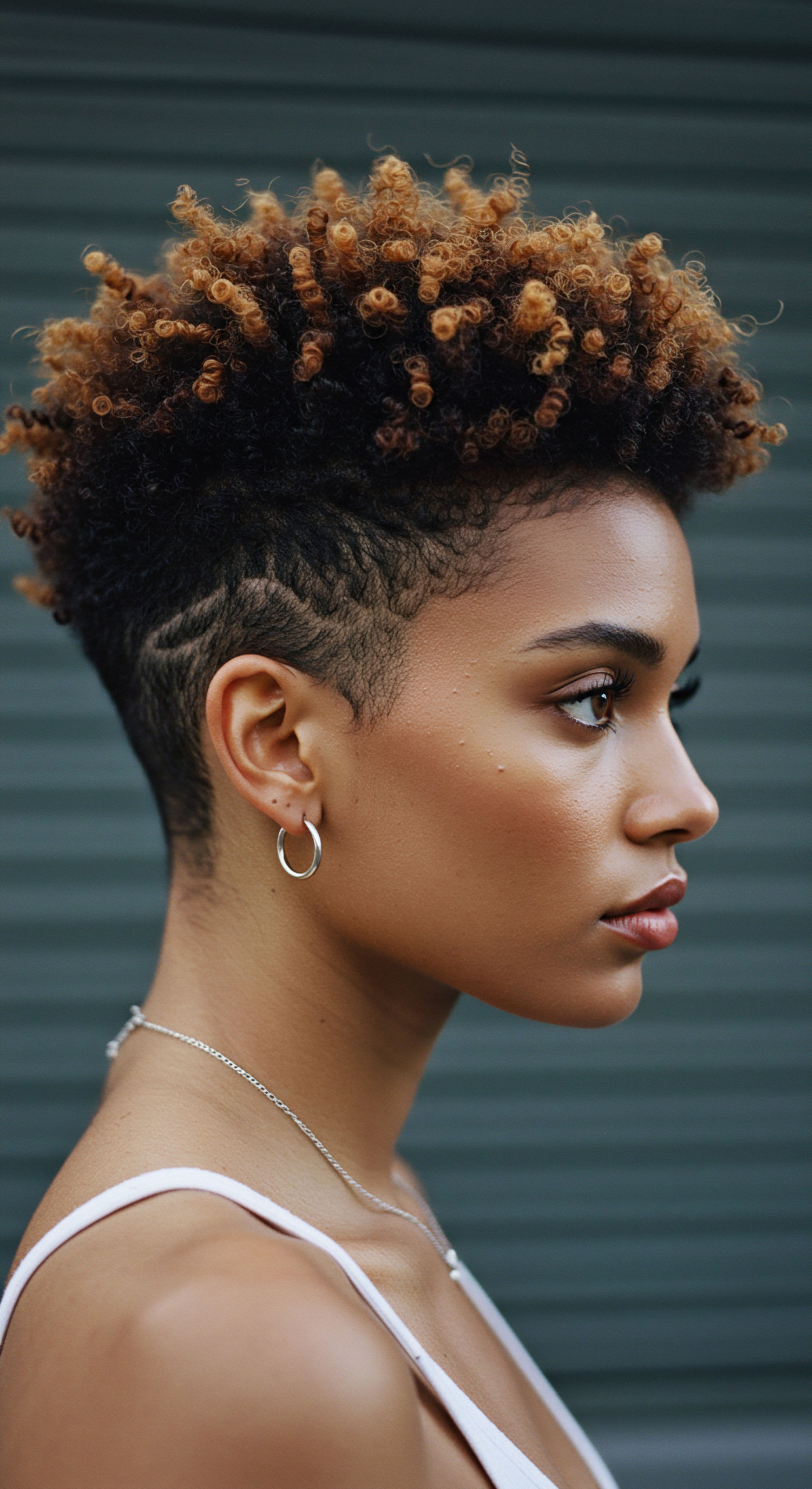
Roots
The quiet moments before slumber, when the day’s demands recede and a different kind of care comes to the forefront, hold a quiet wisdom. For many, particularly those with textured strands, this nightly transition has long been more than a mere routine; it is a profound connection to ancestral practices, a silent conversation with generations past. Our understanding of protecting hair during sleep is not a modern invention, nor a simple convenience.
It is deeply etched into the very fabric of human history, a practice shaped by necessity, cultural expression, and a deep reverence for the hair itself. This journey into the foundational aspects of nighttime hair care begins by looking closely at the intrinsic nature of textured hair, setting the stage for how these ancient insights have come to define our present-day rituals.

Hair Anatomy and Physiology Specific to Textured Hair
To truly appreciate the traditions surrounding nighttime hair protection, one must first understand the unique architecture of textured hair. Unlike straight or wavy hair, which tends to possess a more uniform, circular cross-section, highly coily and kinky strands present a distinct elliptical or even flattened shape. This structural difference, coupled with a higher number of disulfide bonds, contributes to the hair’s characteristic curl pattern.
The twists and turns along the hair shaft create points of vulnerability, where the cuticle, the outermost protective layer, is naturally lifted. This raised cuticle, while contributing to the hair’s beautiful volume and definition, also renders it more susceptible to moisture loss and friction-induced damage.
Consider the intricate path each strand takes from the scalp. The hair follicle itself, from which the strand emerges, is curved in textured hair, dictating the spiraling growth. This curvature means that natural oils, or sebum, produced by the scalp’s sebaceous glands, face a more challenging journey descending the hair shaft.
Consequently, textured hair often experiences a natural dryness compared to straighter hair types, making external moisture retention and protection absolutely vital. This inherent dryness is a biological underpinning for many traditional hair care practices that prioritize sealing in moisture and minimizing exposure to harsh elements.
Understanding the unique elliptical structure and raised cuticle of textured hair reveals its inherent susceptibility to moisture loss and friction, laying a biological foundation for traditional protective practices.
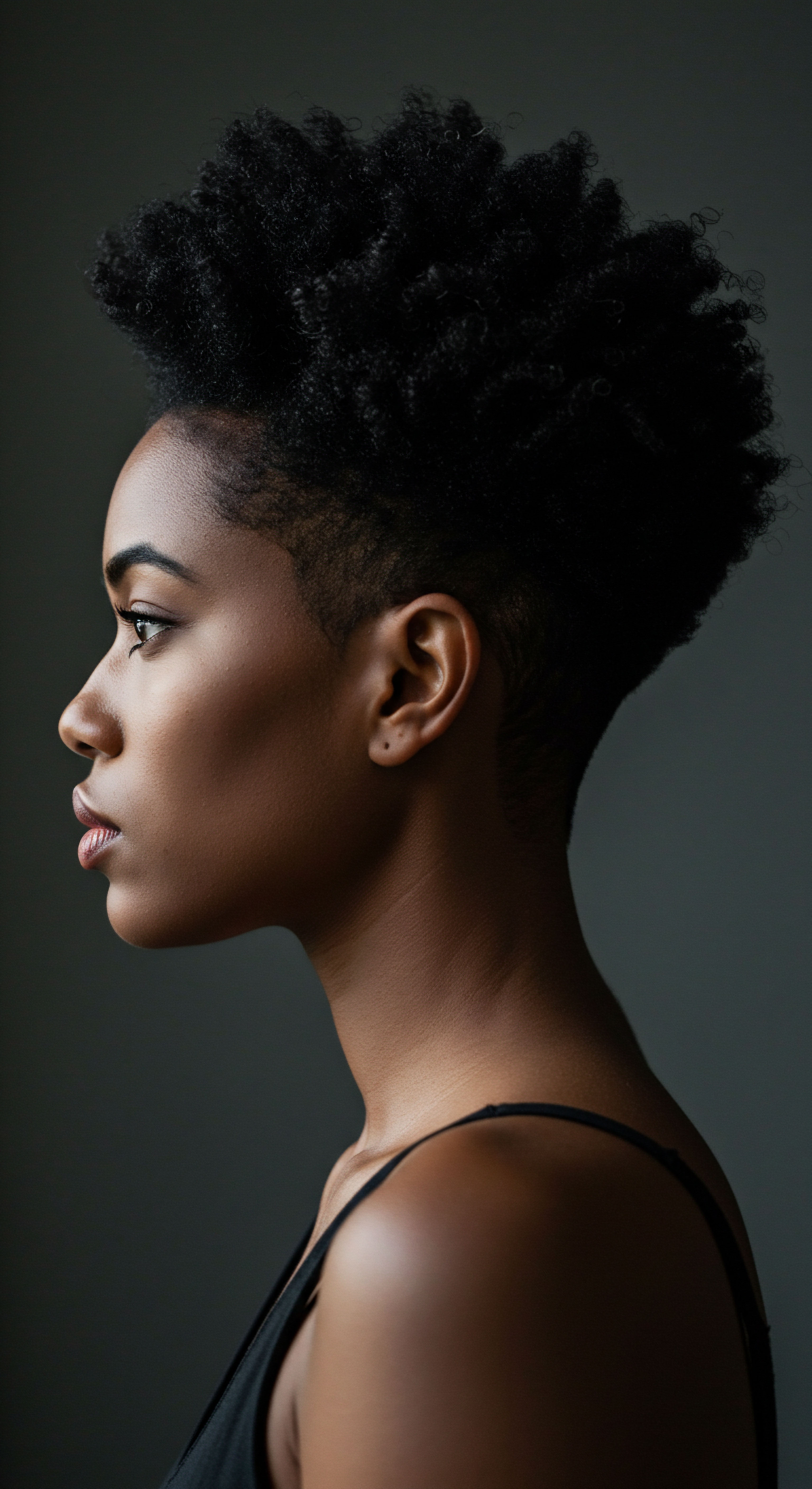
Textured Hair Classification Systems
While various systems exist to classify hair textures, from the widely recognized Andre Walker typing system (1A to 4C) to more granular scientific approaches, their significance extends beyond mere categorization. These classifications, though sometimes debated for their limitations, have provided a common language for discussing hair needs and, by extension, the specific protective measures required. A person with 4C hair, for instance, characterized by tight, Z-patterned coils, will experience different challenges and require different protective strategies than someone with 3A curls. These systems help us appreciate the vast diversity within textured hair, informing product development and care recommendations, including those for nighttime routines.
The dialogue around hair typing has also served to affirm the beauty and complexity of diverse hair textures, moving away from a singular Eurocentric beauty standard. This recognition has empowered individuals to seek out specific knowledge and tools tailored to their unique hair, fostering a sense of pride and ownership over their hair care practices. It has also inadvertently highlighted the universal need for protection, adapting it to the specific needs of each curl pattern.
- Type 3 Hair ❉ Generally features S-shaped curls, ranging from loose waves to tight spirals.
- Type 4 Hair ❉ Presents as Z-shaped coils, often dense and highly compacted, with minimal visible curl pattern.
- Porosity ❉ Refers to the hair’s ability to absorb and retain moisture, a key factor in determining protective needs.
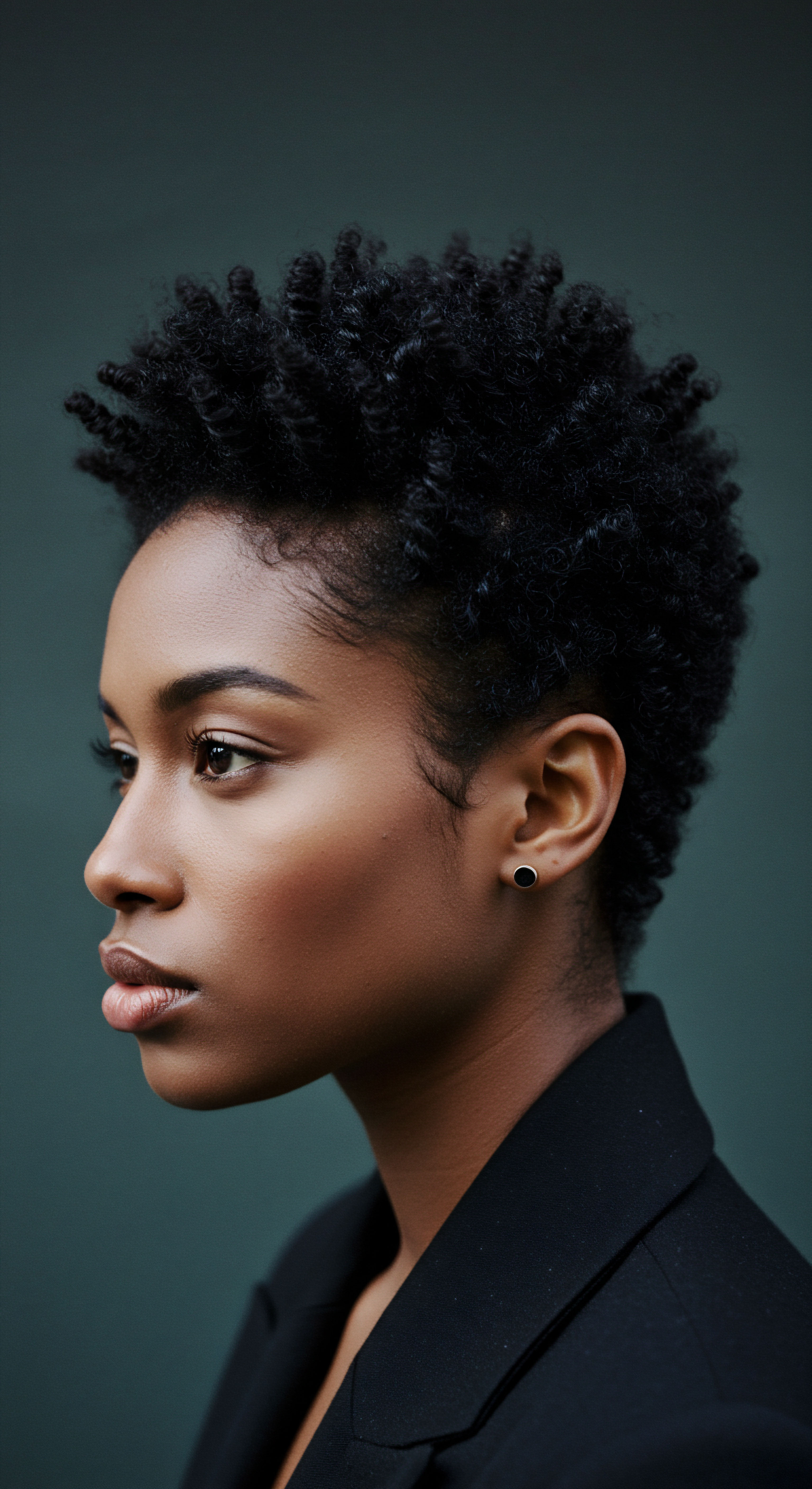
The Essential Lexicon of Textured Hair
Our comprehension of nighttime hair protection has been enriched by a specialized vocabulary, a lexicon that speaks to the particularities of textured hair care. Terms like “protective styling,” “bonnets,” “satin scarves,” “pineappling,” and “pre-poo” are not just buzzwords; they are descriptive markers of practices designed to shield hair from environmental aggressors and mechanical stress, especially during sleep. These terms, many of which have deep roots in Black hair culture, convey a shared understanding of how to maintain hair health and integrity. The widespread adoption of such language signifies a collective acknowledgment of specific hair needs and the innovative solutions developed over generations.
This shared language also serves as a bridge, connecting individuals to a community of knowledge and experience. When one speaks of “maintaining moisture overnight,” the immediate mental image for many with textured hair is a satin bonnet or a silk pillowcase, understood not just as accessories, but as fundamental components of a healthy hair regimen. This common understanding allows for more effective communication about hair care, solidifying the importance of nighttime protection within the broader discourse of hair wellness.

Hair Growth Cycles and Influencing Factors
The cyclical nature of hair growth – anagen (growth), catagen (transition), and telogen (resting/shedding) – plays a subtle yet significant role in our understanding of nighttime hair protection. During the anagen phase, hair is actively growing and is most susceptible to damage that could impede its length retention. Nighttime protection minimizes breakage, allowing more strands to remain in this crucial growth phase for longer. Factors like friction against abrasive surfaces, tangling during sleep, and moisture evaporation can all prematurely push hair into the catagen or telogen phases, leading to perceived stagnation in growth or increased shedding.
Cultural practices around hair protection often intuitively aligned with supporting these natural cycles. By safeguarding hair from environmental wear and tear, especially during the vulnerable hours of sleep, these practices contribute to overall hair health and the potential for greater length. The collective wisdom passed down through generations often recognized, perhaps not through scientific terminology but through observation and experience, that undisturbed hair thrives.

Ritual
Stepping from the foundational insights of hair’s very nature, we arrive at the practices themselves – the rhythmic, intentional actions that have shaped how we guard our hair as the world sleeps. This section invites a closer look at the application of wisdom, the gentle guidance embedded in the techniques and methods passed down, transforming simple acts into meaningful rituals. It’s here that the practical wisdom of cultural traditions truly comes alive, offering a pathway to understanding and nurturing textured strands with gentle, consistent care.

Protective Styling Encyclopedia
The practice of protective styling, a cornerstone of textured hair care, is inextricably linked to nighttime protection. Styles such as braids, twists, cornrows, and buns are designed to minimize manipulation, reduce exposure to environmental stressors, and, critically, guard the hair during sleep. These styles encapsulate the hair, securing delicate ends and preventing friction against pillowcases or bedding.
The cultural lineage of these styles is vast, stretching back centuries across various African civilizations and indigenous communities. For instance, ancient Egyptian women, known for their elaborate hairstyles, often wore wigs or intricate braided styles that could be covered at night, preserving their hair and extensions.
The wisdom behind these styles is multifaceted. They reduce tangling, which can lead to breakage, especially for hair prone to knotting. They also help to retain moisture, as the enclosed hair shaft is less exposed to dry air.
The cultural significance of these styles extends beyond mere protection; they often signify status, tribal affiliation, age, or marital status, making their preservation through nighttime care a matter of cultural identity and pride. The deliberate act of preparing one’s hair for sleep in a protective style is a quiet declaration of care and continuity.
Protective styling, deeply rooted in cultural heritage, safeguards textured hair from environmental stressors and friction, while also preserving its cultural significance during sleep.
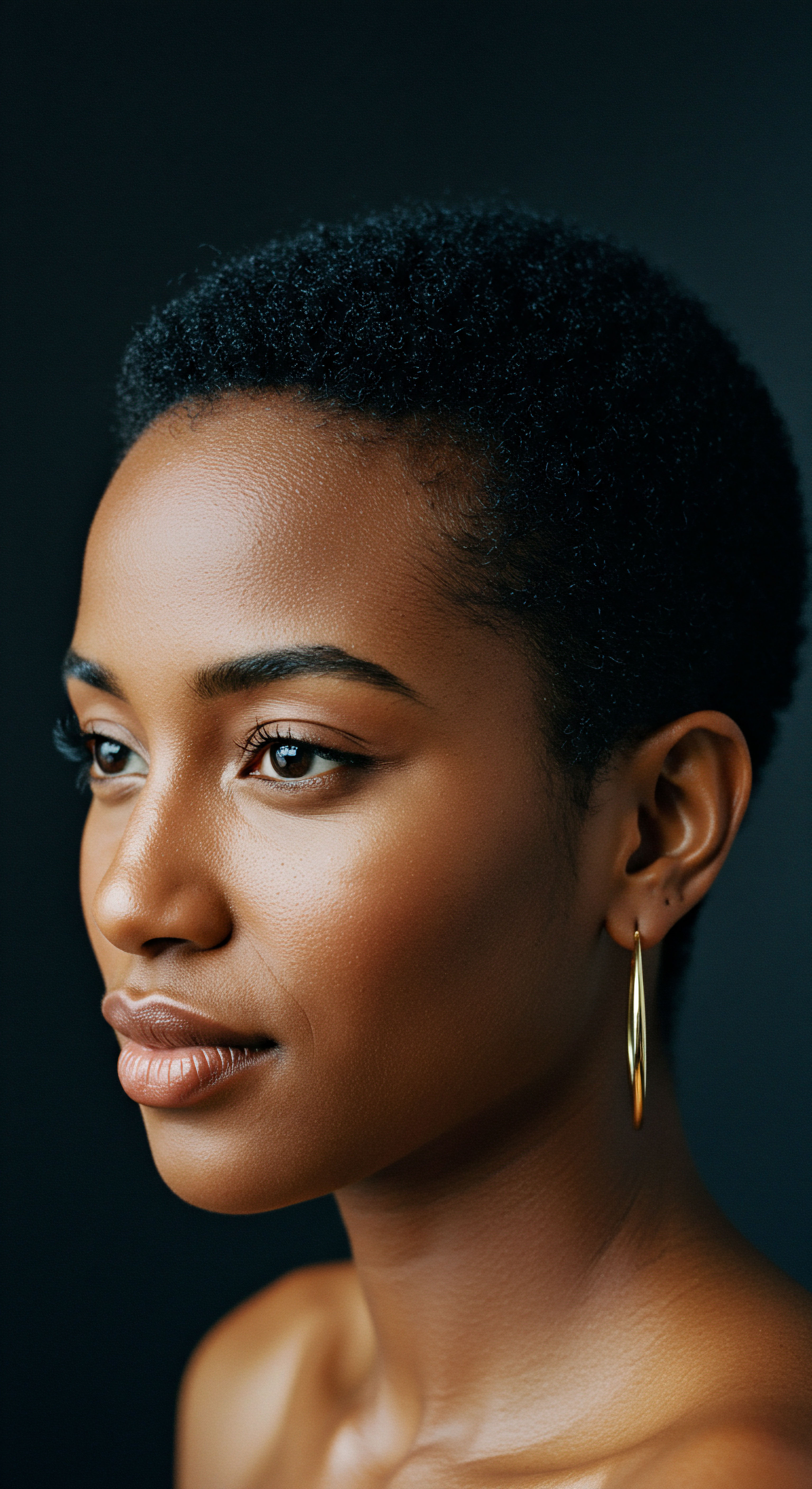
Natural Styling and Definition Techniques
Beyond long-term protective styles, many cultural practices focus on maintaining the definition and integrity of natural curl patterns overnight. Techniques like “pineappling,” where hair is gathered loosely at the top of the head with a soft scrunchie, prevent curls from being flattened or stretched during sleep. This method, popular within the modern natural hair movement, draws on an intuitive understanding of how to preserve volume and shape. Similarly, sectioning hair into large twists or braids before bed helps to maintain curl clumps and reduce frizz, ensuring that the morning reveals defined, hydrated strands.
The application of natural oils and butters before these nighttime techniques is also a deeply embedded practice. Across various cultures, from the use of shea butter in West Africa to coconut oil in parts of Asia, these emollients are applied to hair before protective wrapping, acting as a barrier against moisture loss. This layered approach to protection – styling combined with nourishing agents – speaks to a holistic understanding of hair wellness that transcends mere aesthetics.
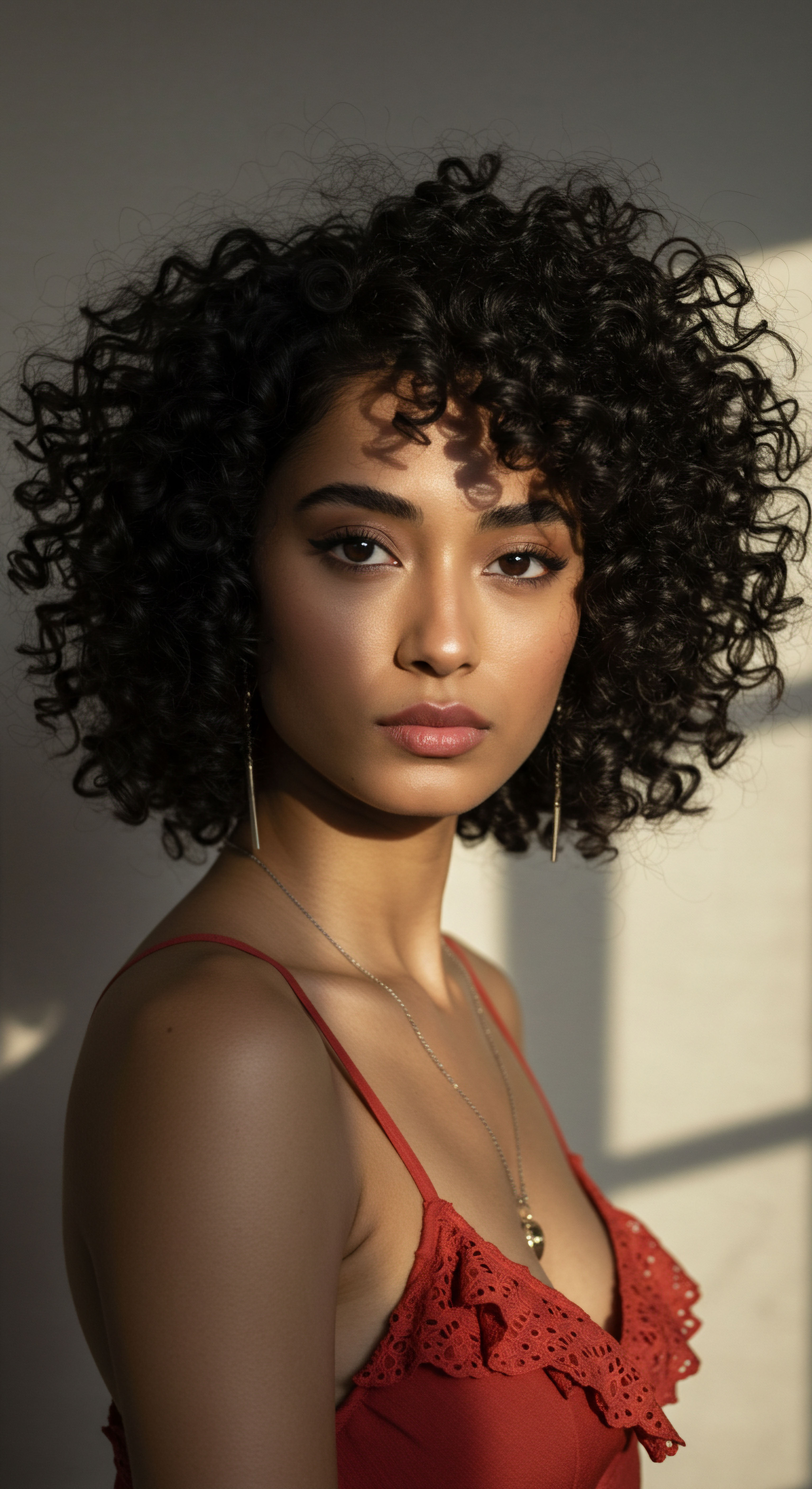
Wigs and Hair Extensions Mastery
The use of wigs and hair extensions, while often viewed through a contemporary lens of fashion and versatility, also carries a rich cultural history tied to protection. In many cultures, wigs and extensions served not only as adornment but also as a means to protect the wearer’s natural hair underneath. During sleep, the natural hair, often braided or cornrowed close to the scalp, is shielded by the wig or extension, preventing friction and manipulation.
The meticulous removal and reapplication of wigs, or the specific care routines for extensions, reflect a dedication to preserving both the accessory and the natural hair beneath. This practice, particularly prevalent in Black communities, showcases an understanding that even when hair is not visible, its health and protection remain paramount. The nighttime routine for those wearing wigs or extensions often involves specific wrapping techniques or placing the wig on a stand to maintain its shape and cleanliness, indirectly supporting the health of the concealed natural hair.
| Covering Type Kufi/Skullcap |
| Cultural Origin (Examples) West Africa, Caribbean |
| Nighttime Protective Function Keeps hair compressed, protects from dust and friction, especially for short styles or locs. |
| Covering Type Duku/Headwrap |
| Cultural Origin (Examples) Various African cultures |
| Nighttime Protective Function Secures intricate styles, prevents unraveling, retains moisture for longer styles. |
| Covering Type Silk/Satin Scarf |
| Cultural Origin (Examples) Global adoption, particularly within Black hair care |
| Nighttime Protective Function Reduces friction, prevents breakage and frizz, maintains moisture for all textured types. |
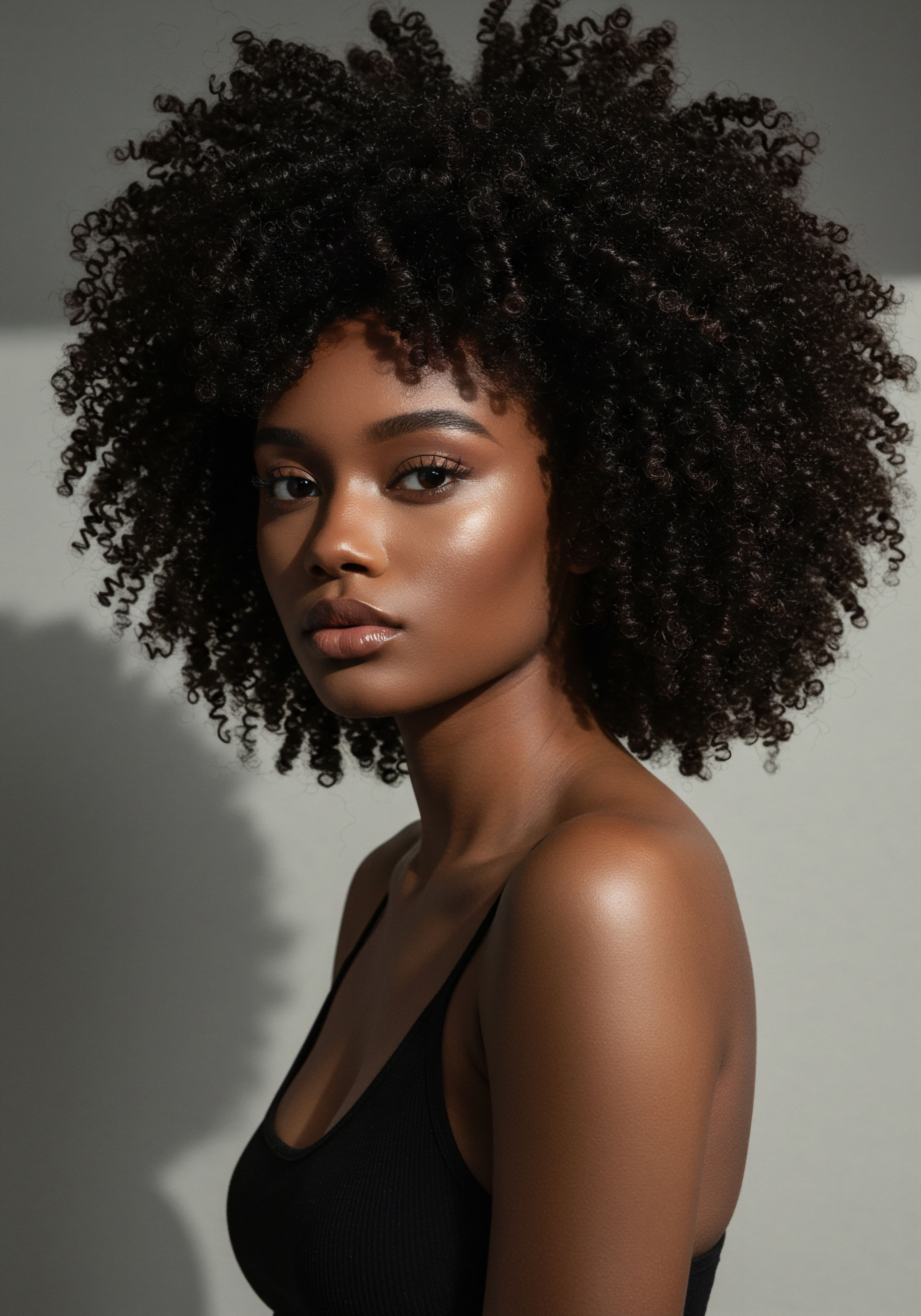
Heat Styling and Thermal Reconditioning
While protective styling emphasizes minimizing heat, cultural practices around thermal reconditioning and heat styling, particularly in the context of maintaining straightened hair, also reveal an understanding of nighttime protection. For those who choose to straighten their textured hair, the nightly wrapping or pin-curling of hair, followed by covering with a satin scarf, becomes a ritual to preserve the straightened state and minimize the need for reapplication of heat. This reduces cumulative heat damage over time.
The “doobie wrap” or “hair wrap” method, where straightened hair is wrapped tightly around the head and secured, is a prime example of a culturally developed technique to extend the life of a heat-styled look. This practice speaks to a practical wisdom ❉ if heat is used, then diligent protection afterward is essential to mitigate its long-term effects. This approach demonstrates a nuanced appreciation for both styling versatility and the necessity of care.
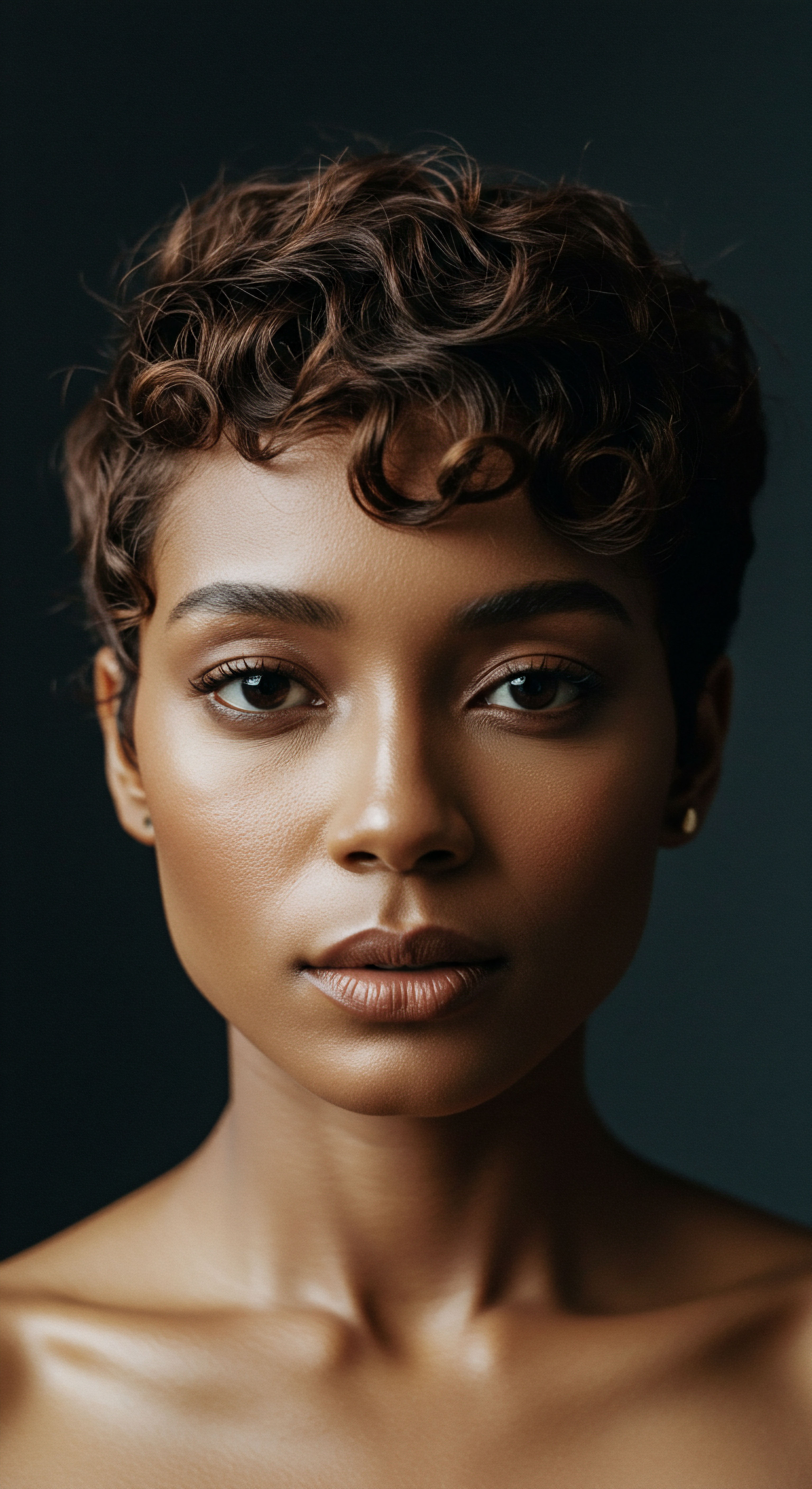
The Complete Textured Hair Toolkit
The tools used for nighttime hair protection are not accidental; they are products of generations of experimentation and adaptation. From the widespread adoption of satin and silk fabrics for bonnets and pillowcases, known for their smooth surfaces that reduce friction, to the preference for wide-tooth combs over fine-tooth ones for detangling before bed, each item in the textured hair toolkit serves a specific protective purpose.
The transition from cotton pillowcases, which absorb moisture and create friction, to silk or satin alternatives is a modern iteration of an ancient understanding ❉ surfaces matter. This shift, driven by collective knowledge sharing within textured hair communities, underscores the continuous evolution of protective practices. The toolkit, therefore, is not merely a collection of objects, but a material manifestation of cultural wisdom applied to the challenge of preserving hair integrity through the night.

Relay
Having explored the fundamental characteristics of textured hair and the rituals that have guarded it through the night, we now step into a more expansive landscape. This section invites us to consider the intricate interplay of forces that have shaped our understanding of nighttime hair protection, moving beyond surface-level discussions to delve into the profound connections between science, cultural heritage, and the deeper layers of human experience. What less apparent complexities lie beneath the seemingly simple act of covering one’s hair at night? It is here that we discern the nuanced ways in which tradition, biological reality, and communal knowledge converge.
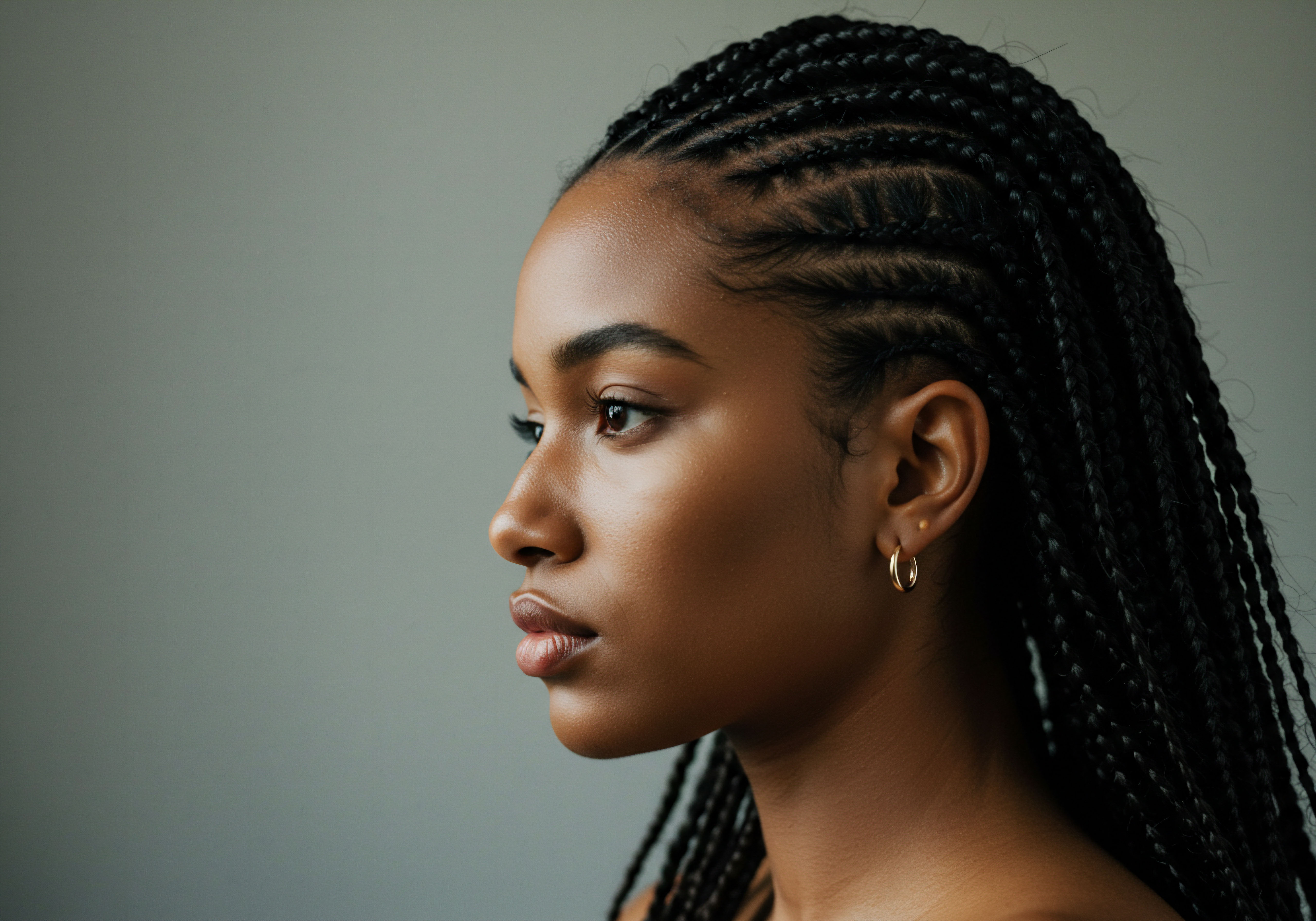
Building Personalized Textured Hair Regimens
The evolution of nighttime hair protection has moved from broad cultural practices to highly personalized regimens, yet these individual approaches remain deeply informed by collective wisdom. A personalized regimen acknowledges that while the principles of moisture retention and friction reduction are universal for textured hair, the application varies based on individual hair porosity, density, and lifestyle. This customization is a direct descendant of the observational knowledge passed down through families and communities, where subtle differences in hair behavior were noted and addressed. The modern natural hair movement, for instance, has amplified this focus on personalization, encouraging individuals to experiment with different bonnets, scarves, and pre-sleep styling techniques to discover what works best for their unique strands.
The emphasis on listening to one’s hair, a concept often championed by hair wellness advocates, is a contemporary echo of ancestral wisdom. It is a recognition that hair, like the body, communicates its needs. This nuanced approach ensures that protective practices are not merely prescriptive but responsive, adapting to the hair’s changing condition and environmental factors.

The Nighttime Sanctuary Essential Sleep Protection and Bonnet Wisdom
The bonnet, or head covering, stands as a prominent symbol of nighttime hair protection, particularly within Black communities. Its prominence is not accidental; it is a direct result of centuries of cultural adaptation and innovation. The bonnet’s role transcends mere practicality; it transforms the act of sleeping into a sanctuary for the hair, a deliberate act of care that speaks volumes about self-preservation and identity.
Consider the often-overlooked environmental stressors within the home. Central heating, air conditioning, and even the natural dryness of indoor air can strip hair of its vital moisture. A satin or silk bonnet acts as a micro-climate for the hair, preventing this evaporative loss. Research on the impact of sleep surfaces on hair health has shown that the friction generated by cotton pillowcases can lead to significant cuticle damage and subsequent breakage for textured hair.
A study published in the Journal of Cosmetic Science, while focusing on hair fiber friction properties, implicitly supports the benefit of smooth surfaces; it found that friction coefficients are significantly lower on silk surfaces compared to cotton, reducing mechanical stress on hair fibers during movement. This scientific validation provides a compelling argument for a practice that has been culturally understood for generations.
Beyond the physical protection, the bonnet also carries a psychological weight. It signifies a boundary, a transition from the public gaze to private care. For many, donning a bonnet is a comforting ritual, a moment of self-tending that reinforces a positive relationship with one’s hair.
- Friction Reduction ❉ Satin and silk materials create a smooth surface, minimizing mechanical abrasion against hair strands during sleep.
- Moisture Retention ❉ The enclosed environment of a bonnet helps to trap natural oils and applied products, preventing moisture evaporation.
- Style Preservation ❉ Bonnets help to maintain existing hairstyles, reducing the need for daily manipulation and heat styling.

Ingredient Deep Dives for Textured Hair Needs
The understanding of nighttime hair protection has also been shaped by an evolving knowledge of ingredients. Traditional practices often relied on readily available natural emollients like shea butter, coconut oil, and various plant extracts. These ingredients, understood through generations of empirical observation, were applied before wrapping hair for the night, serving as both a sealant and a conditioner.
The modern understanding of hair science has refined this knowledge, allowing for targeted ingredient choices. For instance, humectants like glycerin or hyaluronic acid, when paired with occlusives like natural oils or silicones, can create a powerful moisture-sealing effect that is particularly beneficial for overnight treatments. The cultural inclination towards natural remedies has now met scientific validation, leading to products specifically formulated to support nighttime moisture retention. This fusion of ancient wisdom and contemporary chemistry represents a powerful relay of knowledge, enhancing our ability to protect textured hair.
| Strategy Covering Hair |
| Traditional Practice Wearing headwraps, scarves of various fabrics. |
| Modern Scientific Understanding Satin/silk bonnets reduce friction and prevent moisture loss due to low absorption. |
| Strategy Applying Oils/Butters |
| Traditional Practice Using shea butter, coconut oil, plant-based oils. |
| Modern Scientific Understanding Occlusive agents form a barrier, preventing transepidermal water loss from hair. |
| Strategy Protective Styling |
| Traditional Practice Braiding, twisting hair before sleep. |
| Modern Scientific Understanding Minimizes mechanical stress, tangling, and exposure of delicate ends. |
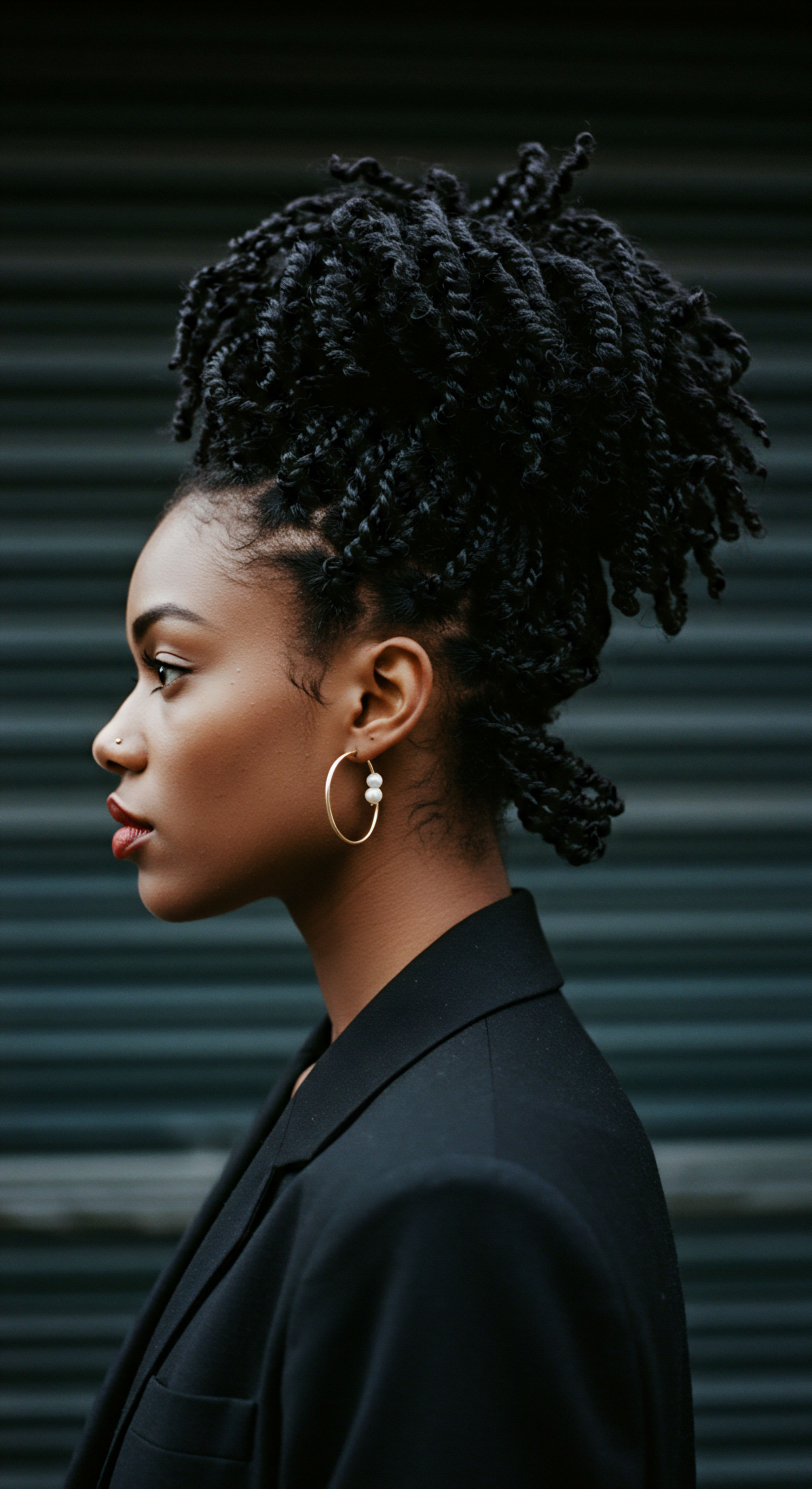
Textured Hair Problem Solving Compendium
Cultural practices have provided a rich compendium of solutions for common textured hair challenges, many of which are exacerbated by nighttime neglect. Frizz, breakage, and dryness are perennial concerns, and traditional methods of nighttime protection directly address these issues. For example, the meticulous braiding of hair before sleep, a practice common in many African and Caribbean cultures, directly combats frizz by maintaining curl definition and preventing individual strands from separating and seeking moisture from the air.
Breakage, often a result of mechanical stress, is significantly reduced by protecting hair from friction against bedding. The collective experience of generations has taught that hair, when allowed to move freely and rub against abrasive surfaces overnight, suffers damage. This experiential knowledge has led to the widespread adoption of protective head coverings, offering a simple yet profoundly effective solution to a persistent problem. The ongoing dialogue within textured hair communities, sharing solutions and adapting techniques, further reinforces this problem-solving heritage.

Holistic Influences on Hair Health
The understanding of nighttime hair protection is not solely about the hair itself; it is deeply interwoven with a holistic view of well-being. In many cultures, hair is seen as an extension of one’s identity, vitality, and spiritual connection. The act of caring for hair, particularly through protective rituals, becomes a form of self-reverence. This holistic perspective views hair health as reflective of overall health, influenced by diet, stress levels, and even emotional states.
When considering nighttime protection, this broader lens means that the practice is not isolated. It connects to the quality of sleep itself, the nourishment one provides the body, and the mindful moments of self-care before resting. The cultural emphasis on holistic well-being has, in turn, shaped how protective hair practices are valued, elevating them beyond mere cosmetic routines to essential components of a balanced and healthy life. This deep cultural understanding, passed down through generations, has fundamentally shaped our collective appreciation for the significance of nightly hair care.

Reflection
The quiet revolution of nighttime hair protection, as we have seen, is far from a simple trend. It is a testament to the enduring wisdom of cultural practices, a delicate thread connecting ancestral knowledge with modern scientific understanding. From the unique anatomical realities of textured hair to the ingenious rituals born of necessity and artistry, our nightly routines for hair care are rich with meaning. They speak to resilience, to identity, and to a profound appreciation for the beauty and vulnerability of our strands, inviting us to continue this quiet tradition of care, passed from one generation to the next.

References
- Lucas, A. (1962). Ancient Egyptian Materials and Industries. Edward Arnold Publishers.
- Yu, J. Xu, J. & Zhou, Z. (2007). Friction properties of human hair. Journal of Cosmetic Science, 58(4), 373-383.
- Byrd, A. D. & Tharps, L. D. (2001). Hair Story ❉ Untangling the Roots of Black Hair in America. St. Martin’s Press.
- Patton, T. O. (2000). African-American Hair ❉ An Historical Perspective. The Journal of Black Studies, 30(6), 752-772.
- Gittens, J. (2018). The African-American Woman’s Guide to Great Skin and Hair. Ten Speed Press.
- Robinson, M. (2013). Hair ❉ A Cultural History. University of Minnesota Press.
- Pope, C. A. (2005). The History of Hair ❉ Fashion and Adornment. Barnes & Noble.